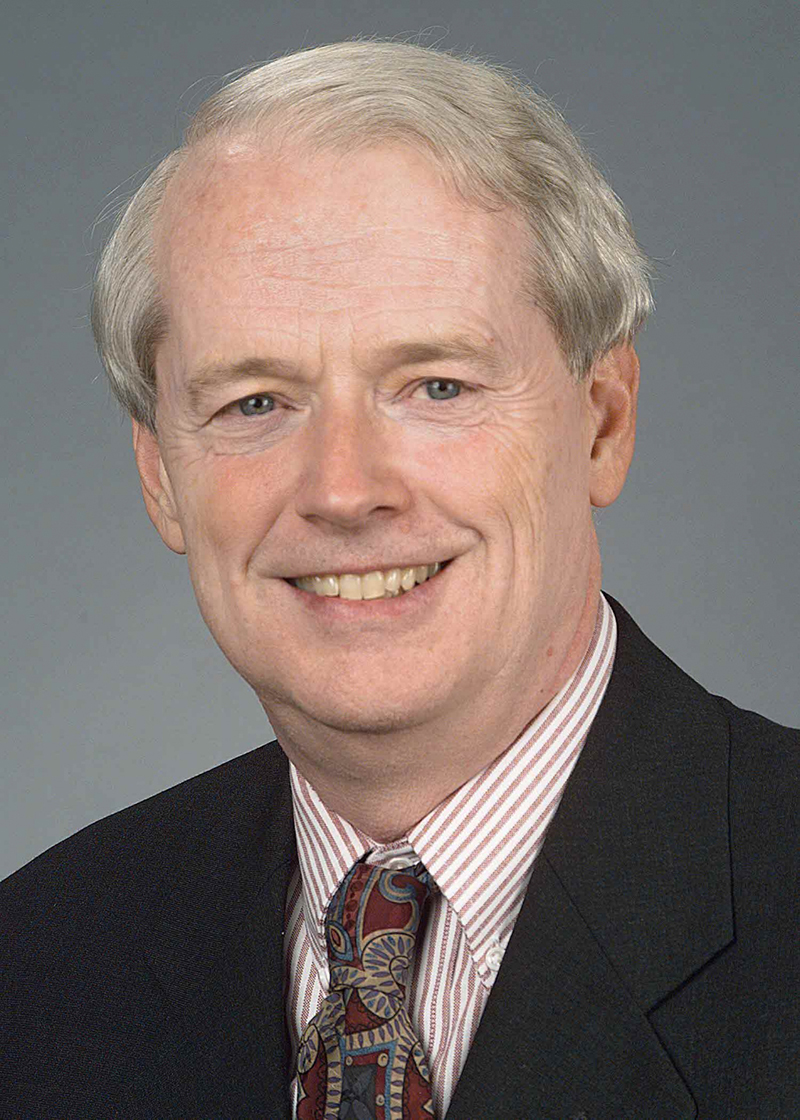Noted astronomer James Houck dies at 74
By Linda B. Glaser

James R. Houck, a noted astronomer in the field of infrared spectroscopy for astrophysics, died in Ithaca Sept. 18 at age 74 from complications of Alzheimer's Disease.
Houck received his Ph.D. from Cornell in condensed matter physics in 1967, then switched fields to astronomy. After post-doctorate work at the Naval Research Laboratory, he worked at Cornell until he retired as the Kenneth A. Wallace Professor of Astronomy in 2012.
“Jim left a strong legacy in the department, especially in experimental astrophysics, playing a major role in the birth and growth of airborne and space-based infrared astronomy,” says Terry Herter, professor and chair of astronomy. “Jim had a unique ability to get deep in both the technical and scientific aspects instrumentation.
“On a personnel level, Jim taught me many things, not the least of which was a sense of the depth, rigor and professionalism needed to get the best from ourselves and our work. We feel the loss with his departure from this life but have gained greatly from the time he spent with us.”
Houck was the principal investigator for the Infrared Spectrograph instrument on Spitzer Space Telescope, launched August 25, 2003. It is the fourth and last of NASA's Great Observatories, the others being Hubble Space Telescope, Gamma Ray Observatory, and Advanced X-ray Astronomy Facilities.
Houck pioneered the use of mid-infrared spectrometers to determine the physical conditions inside a wide variety of astronomical objects, from the giant planet Jupiter to distant galaxies. Early in his career, he built infrared instruments launched on sounding rockets for brief, five-minute peeks at the sky from above the atmosphere. Among the results from that work was the first discovery of the very high luminosities of star-forming regions in our galaxy, a result challenged for a decade until it was confirmed by the Infrared Astronomical Satellite (IRAS) more than 10 years later.
As a member of the science team that launched IRAS in 1983, Houck discovered a large class of sources, which are very faint in the optical and bright in the infrared, using IRAS data. These sources are distant galaxies powered by a combination of starburst activity and accretion of matter onto a central massive black hole. Galaxy collisions, or mergers, are often associated with these sources.
In Houck’s most recent research with IRAS, the most-used instrument on the Spitzer, he focused on the mechanisms responsible for energy generation in ultraluminous infrared galaxies and the formation of dust in the early universe. He was involved in a number of galactic programs including the imaging of circumstellar dust shells around evolved stars, and infrared spectroscopy of planetary nebulae and recent novae.
He was twice awarded one of NASA’s top honors, the NASA Exceptional Scientific Achievement Medal in 2005 and in 2008, he received the American Astronomical Society's Joseph Weber Award for Astronomical Instrumentation, “for his extraordinary contributions over nearly four decades to major instrumentation for infrared astronomy… Dr. Houck's contributions have been seminal to making infrared astronomy among the most exciting in the entire field. It is no exaggeration to say that without Dr. Houck's contributions, modern IR [infrared] astronomy would never have reached its current level of maturity."
Houck also led the Cornell development of the state-of-the-art instrumentation for the 5-meter telescope at the Palomar Observatory. Also, he left a legacy for undergraduates at Cornell with his development of a research-quality telescope for the Hartung-Boothroyd Observatory, dedicated in 1974 and named the James R. Houck Telescope in his honor.
“His passion for learning, doing and teaching science by building instruments and understanding physics led to great benefits for his students and astronomy colleagues,” wrote colleagues in a tribute published in Physics Today.
Houck was predeceased by his wife, Elaine, in 2011, and he is survived by two sons, four grandchildren and his sister.
Linda B. Glaser is a staff writer for the College of Arts and Sciences.
Media Contact
Get Cornell news delivered right to your inbox.
Subscribe